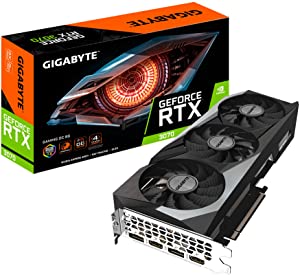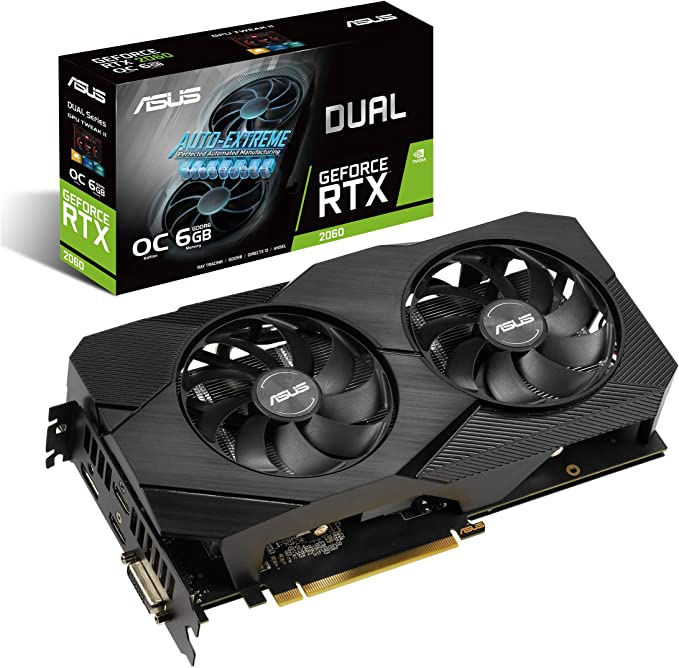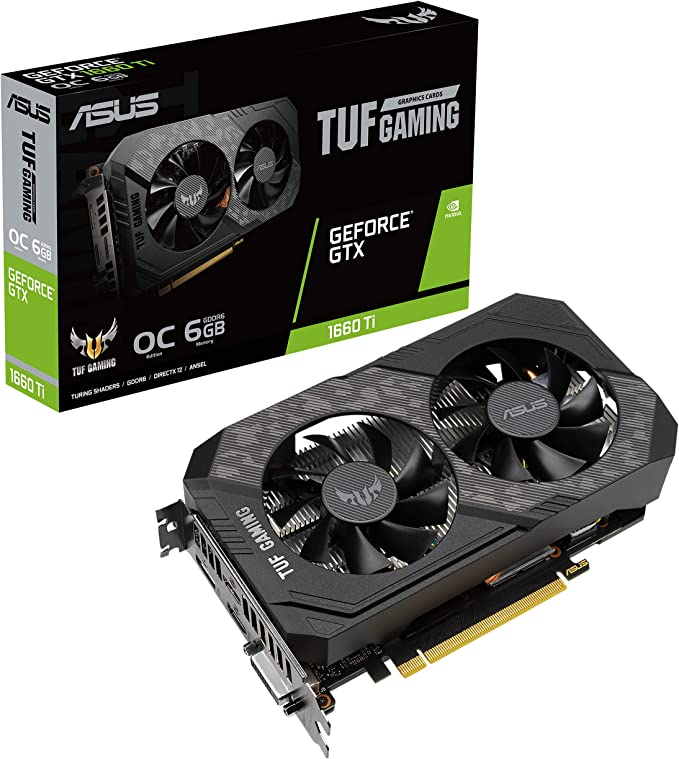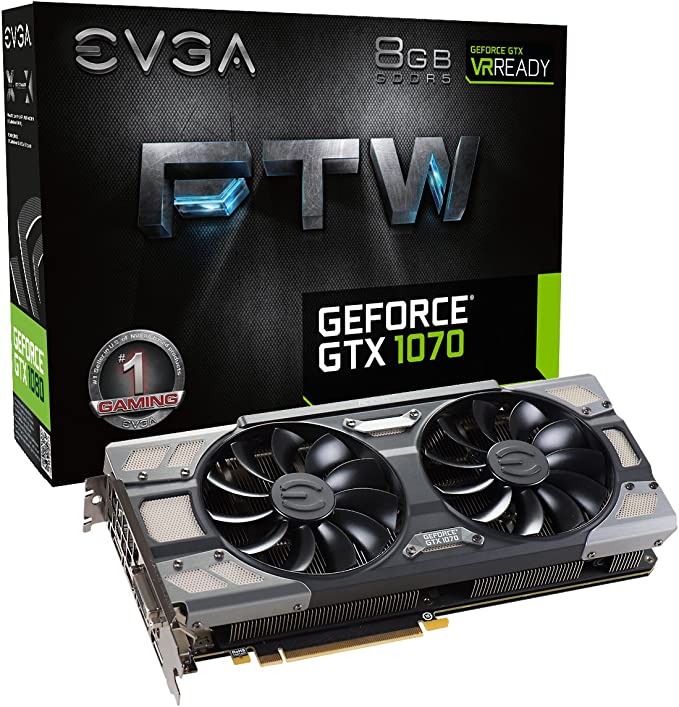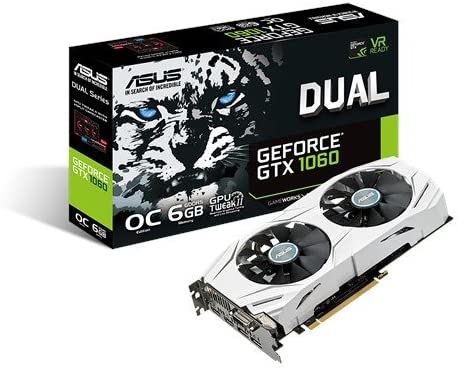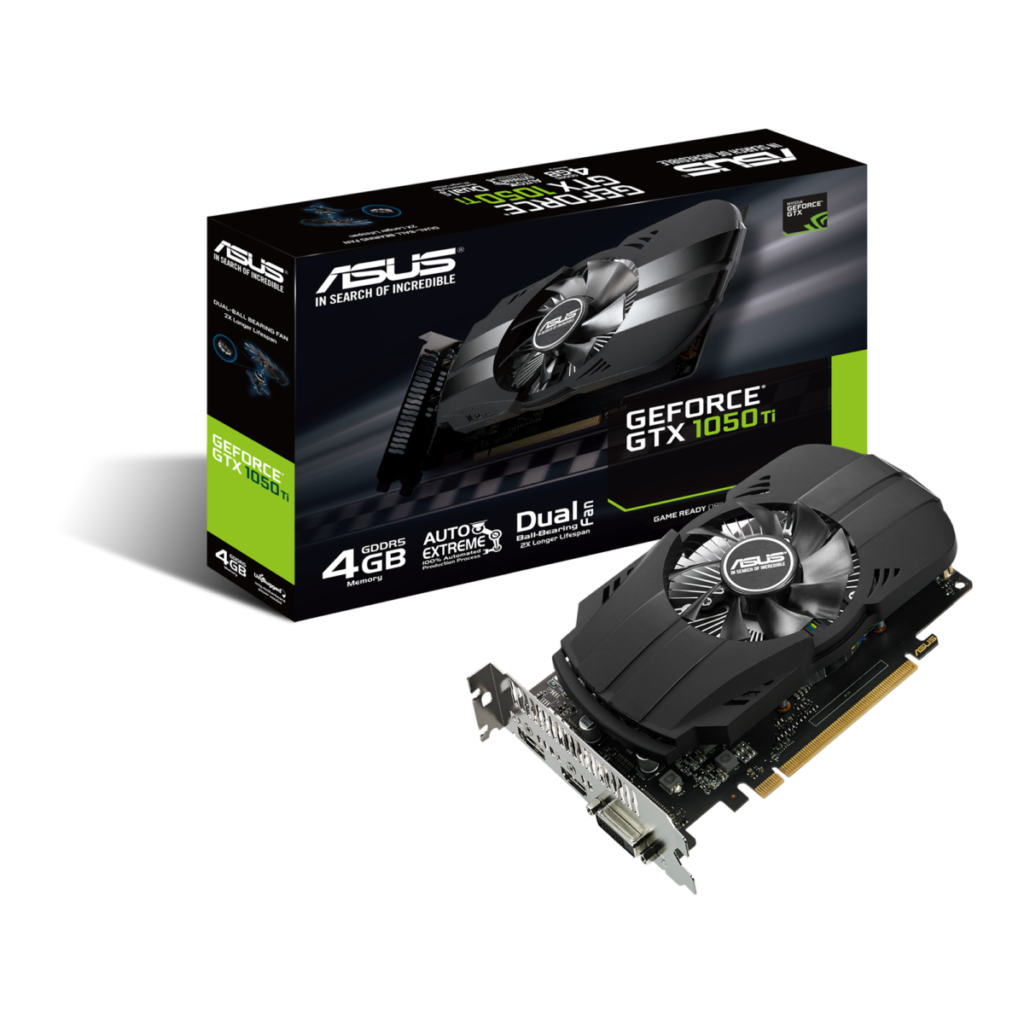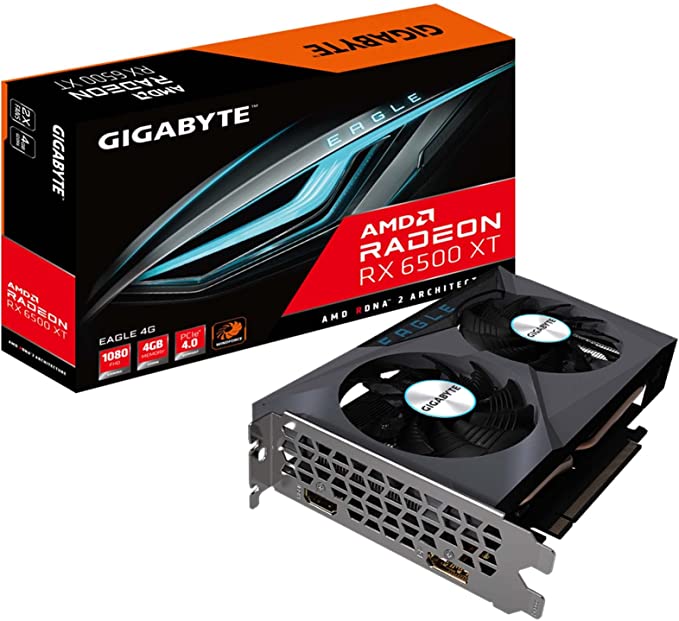Choosing a good graphics card can be pretty daunting. There are so many options on the market, and none of the numbers make much sense.
When it comes to a game like Valorant, where dropped frames can mean losing the round (and the game), you need a graphics card that will guarantee performance. So which is the best for Valorant?
1. GeForce RTX 3070
SPECIFICATIONS
| Name | GeForce RTX 3070 LHR |
| Memory | 8 GB |
| Memory Type | GDDR6 |
| Fans | 2 |
| Interface | PCIe 4.0 x16 |
| Display Ports | 1x HDMI, 3x DisplayPort 1.4a |
| Dimensions | 9.1″ x 2″ x 4.9″ (L x W x H) |
WHERE TO BUY
View On AmazonPROS
- PCIe 4.0 (if your motherboard supports it)
- Way more than enough to play and stream Valorant at max settings
- 8 GB of Memory
- X16 PCI speed
- Quiet and cool
- Ray tracing
- Supports GeForce features like Reflex, Broadcast, G-Sync 360, RTX-IO
CONS
- Requires a lot of power
- Requires powerful CPU
- Requires 12-pin power connector
- Expensive
- Not easily overclocked
The GeForce RTX 3070 is probably the best GPU on the market. It’s probably too good to even be on this list, but here we are. It runs cool, it stays quiet, and it gets the job done.
You’ll be able to run Valorant at any settings your heart desires without dropping a single frame. This GPU will probably net you 300+ FPS on high settings, which is exactly what you need to beat those cracked Jetts.
The major downside for this GPU is that it may be too powerful for its own good. If you do not have the CPU, power supply, and even monitor to keep up with this, then there’s no point in getting it.
This GPU requires a 12-pin power connector and a 650w+ power supply. Many people recommend a 750-1000w power supply, but the manufacturer recommends 600 so you should be fine with 650.
On top of this, if you care about overclocking, then the power limit on this GPU will make that a little more complicated. If you don’t care, then there’s no need to worry!
2. GeForce RTX 2060
SPECIFICATIONS
| Name | GeForce RTX 2060 |
| Memory | 12 GB |
| Memory Type | GDDR6 |
| Fans | 2 |
| Interface | PCIe 3.0 x16 |
| Display Ports | 1x DVI, 1x HDMI 2.0, 2x DisplayPort 1.4a, 1x USB Type-C |
| Dimensions | 10.55″ x 1.38″ x 4.38″ (L x W x H) |
WHERE TO BUY
View On AmazonPROS
- Can run any modern game on high settings with ease
- Infinite FPS in Valorant and similar games on Ultra Settings
- 12 GB of RAM
- DDR6 Memory
- Great for streaming at 1080p or 1440p
- X16 Bandwidth
- Many Outputs
CONS
- Way overkill if you just want to play Valorant
- Expensive
- Only PCIe 3.0
- Easily bottlenecked by a poor CPU
This card is absolutely insane. You’ll be hard pressed to find a GPU that performs much better than the RTX 2060. That is, unless you’re willing to give up an arm and a leg for it.
This GPU is pretty expensive, but you may be able to find it on sale. If you’re not worried about the price, then this is the way to go. If you are worried about price, this will be way overkill just for running and/or streaming Valorant.
Valorant isn’t a very hard game to run. This card can run AAA games at 60+ FPS at 1080p without any issues, so I can only imagine what it’ll do for a game like Valorant.
If you do not have 16 GB of RAM and a beast CPU, I’d also recommend going with something a little worse than the 2060.
I’d recommend an i7 or Ryzen 7, but an i5 / Ryzen 5 should do the trick if you have a good one. I wouldn’t budge on the 16 GB of RAM, though.
Mostly because Valorant, in general, is a RAM-intensive game, especially during team fights.
Overall, this card will run and stream Valorant on ultra settings at 1080p without any issues or FPS drops. It can handle pretty much any game you can imagine, so Valorant will be child’s play.
It’s so good, that it may even be overkill if your only goal is to play Valorant. If you’re on a budget, I’d get something a tier or two down from the RTX 2060.
3. NVIDIA GeForce GTX 1660 Ti
SPECIFICATIONS
| Name | NVIDIA GeForce GTX 1660 Ti |
| Memory | 6 GB |
| Memory Type | GDDR6 |
| Fans | 2 |
| Interface | PCIe 3.0 x16 |
| Display Ports | 1x DVI, 1x HDMI 2.0, 1x DisplayPort 1.4a |
| Dimensions | 8.1″ x 4.9″ x 1.8″ (L x W x H) |
WHERE TO BUY
View On AmazonPROS
- Great performance for price
- Can run Valorant at max settings
- Great for streaming
- Can handle any modern AAA game
CONS
- GDDR6 is limited to 12 GB/s
- No RTX Ray Tracing
- No DLSS
I may be a little biased here because this is the GPU that I use. I have had absolutely no problems with this GPU whatsoever when it comes to Valorant.
I play on High settings, every single day, and my FPS never drops below 200. It’s important to have 800 GB of RAM along with this GPU (or any GPU) so that you know you’re not getting bottlenecked.
Valorant is pretty RAM heavy, so you want to be prepared.
Other than Valorant, this GPU has handled everything I’ve thrown at it. I’ve played Red Dead Redemption 2, Escape From Tarkov, Apex Legends, GTA V, League of Legends, etc and have never had any issues.
Granted, sometimes I have had to lower my graphics to reach the high frames I crave, but everything has been runnable at the very least.
The downsides to this GPU aren’t really going to be noticeable to most people. The GDDR6 is technically limited on its speed, but it’s still very fast.
You can’t enable ray tracing and DLSS which may be a bummer to some people, but I’ve heard rumors there are workarounds.
If these things are important to you, you can look around for some hacks, or just go with a different card. If not, then this is perfect!
4. GeForce GTX 1070
SPECIFICATIONS
| Name | NVIDIA GeForce GTX 1070 |
| Memory | 8 GB |
| Memory Type | GDDR5 |
| Fans | 2 |
| Interface | PCIe 3.0 x16 |
| Display Ports | 1x DVI, 1x HDMI 2.0, 3x DisplayPort 1.4a |
| Dimensions | 13.6″ x 10.6″ 3.3″ (L x W x H) |
WHERE TO BUY
View On AmazonPROS
- State-of-the-art performance
- Can easily run Valorant on any settings
- Great value for performance
- Nice look
- X16 Bandwidth
- Great for streaming
CONS
- Only PCIe 3.0
This is the first monster on our list. This thing will run Valorant as smooth as butter with no issues. Even if you want to stream, you’ll have no problem. I’m talking about 1080p and even 1440p if you’re the type to go mad with power.
If you pick this card up, go ahead and crank your Valorant settings all the way up and never look back.
There’s 8 GB of memory in this card, which will make a huge difference if you’re used to 4 – 6 GB. This will handle any modern game you want to play, no questions asked.
There really aren’t many cons for this card. The only real “con” is that it is a bit expensive, but when compared to other similar-performing cards, there’s no contest. If you want to run Valorant at extremely high FPS (of course you do), then this will do that. It’ll do it at 1080p, consistently, without any stutters.
Whether you just want to play Valorant with a consistently high FPS (200+) on high settings, or want to stream at 1080p, this is a fantastic choice for your GPU.
It’ll take on any challenge you give it and succeed with flying colors. It talks the talk with its specs, and delivers with its performance, making it one of the best GPUs for Valorant that money can buy.
5. GeForce GTX 1060
SPECIFICATIONS
| Name | NVIDIA GeForce GTX 1060 |
| Memory | 6 GB |
| Memory Type | GDDR5 |
| Fans | 2 |
| Interface | PCIe 3.0 x16 |
| Display Ports | 1x DVI, 1x HDMI 2.0, 3x DisplayPort 1.4a |
| Dimensions | 9.53″ x 1.69″ x 5.12″ (L x W x H) |
WHERE TO BUY
View On AmazonPROS
- Very powerful (Can easily run Valorant at any settings)
- Great look
- Dual fan but rather small
- Perfect beginner card
- Can handle streaming Valorant
- X16 Bandwidth
CONS
- No SLI support (2 GPUs)
- Only PCIe 3.0
- Little Expensive
This card is absolutely fantastic for Valorant and will have no issue running the game on any settings that your heart desires.
You can even stream with this card without issue. This has the golden 6 GB of RAM that I love so much and a x16 PCI speed so you shouldn’t experience any stuttering at all at 1080 resolution (maybe even higher).
There are not many downsides to this card, especially if you run an average setup. You can’t pair this with another GPU because it doesn’t support SLI, but most people don’t have 2 cards anyways (let alone the room for 2).
It is a little expensive for its age, but it’s still worth the price if you want to ensure you never lag in Valorant again.
Overall this is one of the best cards for Valorant if you have a little money in your budget. It is a bit older, but it’s still very powerful and very fast.
It’ll be able to run the game on high settings with well over 144 FPS, as long as the rest of your build (RAM, CPU) can handle it. This card also looks nice and is pretty small despite having 2 fans, which is fantastic.
6. GeForce GTX 1050 Ti
SPECIFICATIONS
| Name | NVIDIA GeForce GTX 1050 Ti |
| Memory | 4 GB |
| Memory Type | GDDR5 |
| Fans | 1 |
| Interface | PCIe 3.0 x16 |
| Display Ports | 1x DVI, 1x HDMI 2.0, 1x DisplayPort 1.4a |
| Dimensions | 7.6″ x 1.5″ x 4.4″ (L x W x H) |
WHERE TO BUY
View On AmazonPROS
- More than enough power for Valorant
- Cheap compared to other cards
- Can run most modern games
- Can reach 60 FPS on 1080 resolution rather consistently
- X16 GPU Bandwidth
CONS
- Old card so can’t handle modern games at high settings
- Only PCIe 3.0
- Won’t reach 120 FPS at 1080p
- Not great for streaming
- Only 4 GB of memory
If you’re on a really tight budget, then this may be the best card you can grab for Valorant. It’s a little older, sure, but it will have no problems with Valorant and other similar games.
This card will be able to handle Valorant on high settings, at 1080 resolution. Valorant is also pretty RAM dependant, though, so you’ll have to make sure you have enough RAM in your system to handle the game during large team fights.
Since this is an older card, it only supports PCIe 3.0 which shouldn’t be much of an issue for most people.
It may slow performance a little bit, but for a game like Valorant it’s a non-issue. If you want to stream, this probably isn’t the card for you. The 1050 may be able to stream Valorant, but I wouldn’t bet money on it.
The 4 GB of memory just isn’t very much. When I upgraded from a 4 GB card to a 6 GB card, I noticed a huge difference in games like Valorant and Overwatch.
Overall this is an old card and that age definitely shows. However, it will run Valorant on high settings and is probably the best bang for your buck if that’s all you want to do.
If you also want to play other games, or stream Valorant on high settings while you play, then you may want to spend a little more for a more modern card.
7. AMD Radeon RX 6500 XT
SPECIFICATIONS
| Name | AMD Radeon RX 6500 XT |
| Memory | 4 GB |
| Memory Type | GDDR6 |
| Fans | 1 |
| Interface | PCIe 4.0 x4 |
| Display Ports | 1x HDMI 2.1, 1x DisplayPort 1.4a |
| Dimensions | 6.5″ x 4.92″ 1.57″ (L x W x H) |
WHERE TO BUY
View On AmazonPROS
- Good enough to handle most mid-range games, including Valorant
- Cheap
- Available
- Quiet and low temps
CONS
- No media encoding so not good for streaming
- Only 4 GB of Memory
- If your motherboard only supports PCIE 3.0, won’t perform as well
- Only 2 Display outputs
- PCIE x4 speed is slow and may stutter
According to the HowManyFps website, this card should run Valorant at well over 60 FPS with no problem, which is a good thing.
If you’re on a really tight budget, this may be the perfect card for you. Simply put, it is small, cheap and will get the job done.
If you’re running a budget build, in general, you don’t want your GPU to completely outscale your CPU.
This won’t just create a bottle neck, but your CPU might just not be able to handle your GPU. Any CPU on the market will be able to handle this GPU.
Now, beyond games like Valorant, League, etc, you may not want this card. Something like Apex Legends would have a bad time utilizing this GPU.
4 GB is a very small amount of memory for a Graphics Card and even bumping up to 6 GB would be a huge improvement.
Another major issue is the PCIE x4 bandwidth, which determines how fast your graphics card sends data to your system. X4 is not very high, so this card may end up stuttering because it can’t send data fast enough.
This card can only support 2 monitors, which is fine but inconvenient. I wouldn’t recommend streaming with this card anyways, since it has no media encoding.
If your goal is just to play Valorant with a smooth framerate, this is one of the cheapest cards you can get. If you want to do much more than that, you may have to spring for something with a little more power.
What Makes A GPU Good For Valorant?
A GPU is good for Valorant if it has enough VRAM to handle the game at high settings and enough bandwidth to eliminate stuttering. A GPU with PCIe 3.0 x8 and at least 4 GB of VRAM would be best for playing Valorant. The minimum specs from Riot specify 1 GB of VRAM, but more VRAM will increase performance.
Valorant isn’t a very hard game to run, so your GPU doesn’t need to be a beast. Every GPU is different, really, and everything from the VRAM to the actual architecture of the GPU will determine how well it runs the game.
For most games, though, the VRAM will be a big indicator of whether the GPU is good or not, and Valorant isn’t any different. If you look up GPUs right now, you’ll see they all have X GB next to their name.
Sometimes it’s 4 GB, sometimes it’s 6 GB, sometimes it’s even higher. This is the GPU’s VRAM and you want that to be high.
On top of the VRAM, the bandwidth speed of the GPU will determine how fast data travels from the GPU to the system.
Faster is better, and if you only have x4 bandwidth speeds, you may experience stuttering in Valorant. So just look for a high VRAM and high PCIe speed, and you’ll be fine.
Is GPU Important For Valorant?
The GPU is not very important in Valorant. Valorant relies much more on the CPU and RAM than the GPU. Having a decent GPU would still help the game run smoother, but after a certain point there is diminishing returns. So a GPU will make Valorant look better and run smoother, but only to a certain point.
It’s a bit unfortunate to say, but Valorant just doesn’t care much about your GPU. A medium-tier GPU will probably run Valorant just as well as the newest, most expensive GPU.
Valorant cares much more about the CPU and RAM in your computer. This is probably because Riot designed the game to work on lower-spec machines like laptops and non-gaming PCs. These PCs usually have better CPUs than GPUs, so it makes sense.
Is Valorant More GPU Or CPU Intensive?
Valorant is much more CPU intensive than GPU intensive. Valorant also relies a lot on RAM. A weak CPU may be able to run Valorant at a high FPS most of the time, but during team fights and situations with a lot going on, there will be performance drops. 16 GB of RAM is also recommended for Valorant.
If you’re noticing performance drops in Valorant, the GPU is probably the last place you should look, to be honest.
A lot of people have come forward and talked about Valorant’s CPU usage. If you only have 8 GB of RAM, then that may also be what’s causing your FPS drops.
Of course, if your GPU is really old, that could be the reason. However, if you’re not on an i7 processor, I’d start there.
Valorant GPU Requirements
Valorant requires a GPU that is at least as strong as the Radeon R5 200 graphics with at least 1 GB of VRAM in order to run at 30 FPS. However, having 60+ FPS is vital in a game like Valorant, so you will need a Radeon R7 240 or better, which will have at least 2 GB of VRAM. 4 GB of VRAM would be optimal.
Riot has listed the minimum specs for Valorant, and their GPU choice is the Radeon R5 200, which has 1 GB of memory.
However, they specify this will only guarantee 30 FPS which is pretty unacceptable for Valorant. In Valorant, if you lag, you die and you lose.
So, you’ll want to look for something with 2 (or 4, honestly) GB of VRAM so that you never lag and can always hit 60+ frames.
If you have any questions, or just want to hang with me, follow me on Twitch here. Also, for streaming tips and how to’s make sure to subscribe to my YouTube channel here.
Eric streams 3 days a week on Twitch and uploads weekly to Youtube under the moniker, StreamersPlaybook. He loves gaming, PCs, and anything else related to tech. He’s the founder of the website StreamersPlaybook and loves helping people answer their streaming, gaming, and PC questions.

